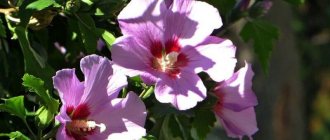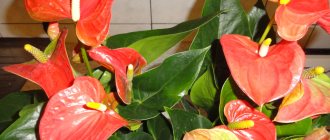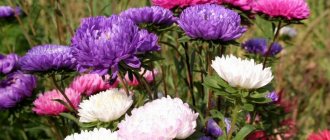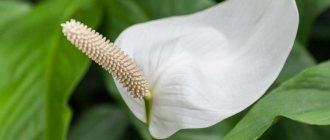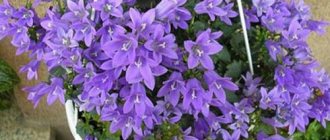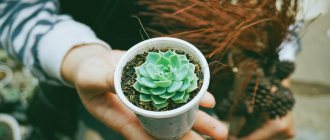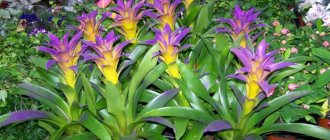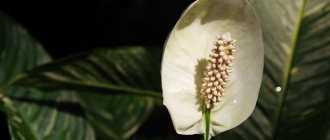Scabiosa will decorate any, even the most unremarkable, place in the garden. This is a delicate plant, the flowering of which is associated with simplicity, lightness, and grace. Its color scheme is varied, the colors are discreet. The aroma is subtle and attracts bees. Scabiosa has become a godsend for all gardeners: growing from seeds is not difficult, which is why in a short time any area turns into a beautifully flowering paradise.
Scabiosa: growing from seeds
Botanical description
Scabiosa is an annual or perennial herbaceous plant belonging to the Honeysuckle family. Its erect, leafless stems reach a height of up to 1 m and can become woody at the base. For this reason, the plant is also classified as a subshrub. The leaves are pinnately dissected or serrated, collected in a basal rosette.
Scabiosa surprises with its variety of varieties
The inflorescence is the head (in some varieties flattened), consists of individual small flowers in the center and larger ones at the edges. The inflorescence is bordered by a crown of flowering leaves. Large anthers of the stamens stand out against the background of delicately colored petals. Flowering occurs at the end of June and until September - the period when most summer flowers have faded, and autumn ones have not yet come into their own.
REFERENCE. According to one version, Scabiosa translated from Latin means “itching, scabies.” It is believed that in the past such symptoms were treated with one of the species of this plant. The crop is popularly known as scabious cornflower, cone cornflower, button grass, pincushion, devil's root.
The distribution area is the countries of Africa, Europe and Asia, but mainly the Mediterranean. In Russia, the flower grows well in the Caucasus and is found in the middle zone and Southern Siberia. In colder regions it is grown indoors. In general, the plant tolerates frost well and tolerates hot weather. Looks good in group plantings, less often planted in individual compositions.
Scabiosa in the vicinity of other flowers
Prices for scabiosa seeds
scabiosis seeds
Kinds
The genus Scabiosa includes more than 100 species and a huge number of varieties. Below are the most popular of them in ornamental gardening.
Pigeon scabiosa (Scabiosa columbaria).
It is a low herbaceous plant with thin, elastic, straight, dark green stems. At their tops, rounded inflorescences are formed - blue heads. Their diameter is 6–7 cm. The bush branches strongly, growing up to 70 cm in diameter. The height of this species is 100 cm. The basal leaves are oval, oblong, deeply dissected. Stem leaf blades are twice pinnately dissected.
Among the most popular varieties of scabiosa pigeon are:
“Butterfly Blue” is a medium-sized bush up to 30 cm high. It grows up to 40 cm wide. It forms a bright fluffy rug in the garden. Has lush lavender buds;
“Pink Mist” is a winter-hardy variety that can withstand frosts down to -35 degrees. The height of the bush is 30 - 40 cm, diameter - 40 - 50 cm. Round, capitate inflorescences are pale pink in color.
Caucasian scabiosa (Scabiosa caucasica).
A bush with thin ribbed dark green shoots looks very elegant due to its beautiful snow-white or light lilac and pink inflorescences. The height of the plant is 70 cm. This species is used for planting in flower beds in combination with other flowers, as well as in tapeworms to decorate individual areas of the garden.
Scabiosa graminifolia.
This species is also in demand among gardeners, as, being a rather attractive plant, it requires a minimum of care. It is a subshrub 65 cm high. The inflorescences are spherical heads and have a light blue, white, or crimson color. The foliage is silvery white.
Purple scabiosa (Scabiosa Atropurpurea).
One of the most expressive species of this culture. The bush consists of ascending thin shoots with rounded capitate simple or double inflorescences of a purple hue. This variety has varieties with pale yellow and burgundy flowers. I often use the purple look to decorate borders and rocky gardens.
Japanese scabiosa (Scabiosa japonica).
A lush bush consisting of several branching shoots. Its height reaches 25–30 cm. The diameter of the lilac capitate inflorescences is 5 cm. In flower beds, varieties of Japanese scabiosa are grown, such as “Schneebal” with white flowers, “Fairy” with purple buds, “Lacherosa” with purple heads.
The best varieties
Currently, there are up to 100 species of scabiosa, some of them relatively recently were allocated into a separate genus - Korostavnik. In general, most crop varieties are obtained through selective breeding and are considered garden varieties not found in nature.
Scabiosa caucasica
The plant is distributed in the mountains of the Caucasus, Turkey, and Iran. It is distinguished by large inflorescences up to 7-8 cm, densely located on stems 60-70 cm high. The color scheme is shades of purple, long-term flowering - from July to September. It is a perennial, but can be grown as an annual crop. Hybrid forms that produce white, pink, blue, purple flowers are popular - Nachtfalter, Fama, Compliment, Blauer Atlas, Perfecta and others.
Caucasian scabiosa is used more often than other species in landscape design:
- Included in mixborders, ridges, alpine slides;
- Planted along hedges and paths;
- Create solo compositions in separate containers;
- Grown for cutting for bouquets.
Scabiosa caucasia Fama White
Scabiosa japonica
A perennial plant native to the Japanese islands. A frost-resistant species that is perfectly cultivated as a biennial in central Russia. Low-growing due to natural growing conditions - up to 60 cm. Some varieties do not exceed 20 cm. Flowers of red and pink shades are about 5 cm in diameter. Flowering is bushy, uniform, lasts from late June to September.
Scabiosa japonica Pink Diamonds
Scabiosa japonica Romance
Scabiosa yellow
Originally from Europe, however, it is quite rare in Russia - in several regions it is listed as a wild species in the Red Book. A fairly large perennial, reaching a height of 1 m under favorable conditions. The stems are erect and powerful, but require additional support in strong winds. The flowers are pale yellow and peak in late summer. In landscape design, it is usually used as a backdrop for more colorful crops.
Scabiosa ochroleuca Moon Dance
Scabiosa ochroleuca Pixie Yellow
Scabiosa stellata
It is an annual plant also known as Scabiosa stellata. What is valuable here is not so much the pale blue flowers as the unusual bracts that form after the petals fall. This is what distinguishes stellata from other species - beautiful balls consisting of golden bracts, shaped like paper funnels. The culture looks great in any mixed composition, be it a modest bouquet or a mixborder. Its height is no more than 60 cm.
Scabiosa stellata after flowering
Bouquet with stellata
Scabiosa purpurea
Annual, less often biennial crop. Valued for its brightly colored burgundy flowers; in some specimens the color can be close to black. The plant has powerful pubescent stems up to 110 cm in height, inflorescences about 7-8 cm - they emit a strong aroma. Some hybrids are undersized. Unlike other species, purple does not tolerate negative temperatures, so it grows well in southern conditions. Flowering is long - up to 2 months, starting in July. In Europe it is known as the “flower of mourning” or “Egyptian rose”.
Scabiosa atropurpurea Ace of Spades
Scabiosa atropurpurea Chile Black
Scabiosa terry
May refer to any of the above types. Its varieties have large, well-pubescent inflorescences, the color of which varies depending on the variety. Among them are Fruit Ice, Lavender Lady, Crystal and others. Terry scabiosa is in demand in landscape design and bouquets.
Fruit ice mixture
Video - Scabiosa
Decorative qualities
Scabiosa is used in landscape design due to its high decorative qualities. It is combined with phlox, cornflower, asters, irises, yarrow and other bushy or paniculate plants. The decorative effect is achieved through the contrast of color shades and textures of flowers.
Scabiosa in landscape design is widely used in the creation of rockeries, alpine slides, and mixborders. Dwarf and low-growing species of scabiosa will perfectly decorate borders along garden paths.
In floristry, the scabiosa flower has also found wide application - it is used to create not only field bouquets, but also any other festive compositions, not excluding wedding bouquets. She achieved such popularity thanks to her unusual bright inflorescences.
Reproduction methods
In nature, scabiosis reproduces by self-seeding. In culture, three methods are practiced:
- Seeds. The method is suitable for annual and perennial species in any climate. For this purpose, 2-3 strong peduncles are left on the rosette until the seeds are fully ripened. Collect seeds in the fall, put them in a cotton bag and bury them in damp sand. The container with seeds and sand is put away in the cold, for example in the basement. With this storage method, seed germination lasts up to 3 years;
- Seedlings. The essence is the same - sowing seeds, but not in beds, but in temporary containers. When the seedlings become stronger and the weather becomes favorable, they are planted in open ground.
Root system of young scabiosa
- Dividing the bush. This method is practiced only for perennials with an overgrown root system. The root is divided into 2 parts with a shovel, after which each of them is transplanted to a new place. In this case, both parts together with the root should have a pair of sprouts. This method is used to “renew” old bushes whose flowering has become sparse. The work should be carried out in the spring before the growing season begins.
Prices for seedling boxes
seedling boxes
Perennial gypsophila: planting, care, photos and plant features
Gypsophila has the appearance of a flowering shrub. Its delicate white or pink flowers abundantly cover the perennial, creating the effect of an airy haze. Photos of gypsophila, which can be found on the Internet, clearly show that this type of plant will look good:
- in the background of the garden;
- at walls for retaining purposes;
- in the rock garden.
The perennial is characterized by increased resistance to winter cold. The main preferences are light soil with high levels of fertility and moisture, sunny areas.
On a note! Gypsophila reacts extremely vulnerable to transplantation. To increase the percentage of successful outcome, you should pre-treat the root system with a root formation stimulator. Perennial gypsophila is excellent for planting on an alpine hill.
Read the continuation of the article on the next page. To move to the next part of the article, use the page navigation numbers.
Growing conditions
Under natural conditions, scabiosis is common on the slopes of mountains, its individual species are found even at an altitude of 2000 m. But it also grows well in meadows, on the edges of forests and wherever the soil is well drained and has a neutral or alkaline reaction. The composition of the soil does not play a big role. It is only important to remember that stagnant moisture and acidic soil are destructive for the plant.
Wild scabiosa is adapted to unfavorable conditions. It easily tolerates drought and exposure to direct sunlight. It grows well in partial shade and overwinters under snow. Ornamental plant varieties have inherited most of the listed qualities and are therefore considered very unpretentious.
Wild scabiosa
ON A NOTE. In culture, scabiosa is grown in open sunny areas, possibly on hills or on southern slopes where there is no flooding. The site must be protected from prevailing winds, as the plant is sensitive to gusts of air.
Time to sow
Scabiosa is planted with seeds in the spring, when the ground has already warmed up a little under the sun. The optimal time is mid-April, if the winter is not long. In the south, you can start sowing at the end of March, around the same time as carrots and beets. There is no need to be afraid of frost; the seeds are not afraid of the cold.
In regions with late spring, scabiosa is planted using seedlings. In this case, seeds are sown for forcing in a greenhouse at the beginning of March or even at the end of winter. It is also practiced to sow before winter, in which case the first shoots will appear a couple of weeks earlier.
The exact sowing time is determined by the climatic characteristics of the region
How to prepare the ground for scabiosis
Scabiosa does not tolerate heavy, clay soils. She needs a light, nutritious substrate in which her roots will “breathe”. Therefore, if possible, prepare the area for sowing in advance so that by spring the organic matter added to the soil will rot and release all the necessary nutrients. Along with organic fertilizers (for example, compost), you can add a little gravel and sand to the soil (2-3 buckets per 1 m2) - this will make the growth conditions closer to natural.
REFERENCE. If it is planned to sow the plant before winter, the site is dug up approximately 30 days before the main work.
Wood ash reduces soil acidity
Since scabiosa prefers slightly alkaline soils, it would be useful to add a little wood (about 200 g/m2) or peat ash (350 g/m2) to the soil. Instead of ash, you can use slaked lime or dolomite flour. From an environmental point of view, dolomite flour is better than lime, although the effect of its use is noticeable somewhat later.
Prices for slaked lime
slaked lime
How to prepare seed
Preparing flower seeds is not a mandatory procedure before sowing, however, a few simple techniques will significantly increase their germination and help grow healthy seedlings:
This is what scabiosa seeds look like
Popular varieties
Teasel has about a hundred species and varieties, more than half of which are artificially bred from the most interesting and decorative natural varieties.
Scabiosa purpurea
A very fragrant species with upright leaves and delicate small (up to 2 cm) flowers in purple, pink or blue, as well as pure white varieties. It is distributed in the regions of Southern Europe. The stamens on the flowers of this variety look very impressive, like pins stuck into a pincushion (for which the plant received the name “pincushion”). It is usually grown as an annual plant, but in areas where winter temperatures do not fall below zero, it can grow as a perennial. This is one of the most cold-resistant plant species.
Caucasian
It is a textbook representative of perennial scabiosis, which has long and successfully taken root in our garden plots. It has a height of 50-60cm, forming a lush, spectacular bush, which is not a shame to place in a front flower bed. The flowers are light, white-cream to ocher in color. Up to 30 buds can bloom on a bush at one time. The variety is the genetic material for breeding varieties with blue-violet inflorescences. Flowering is long, up to 40 days. The best representatives of the species are the white-flowered Alba and Miss Wilmotg, as well as the blue-violet Morhaime Blue and Nachtfalter.
Scabiosa japonica
A perennial or biennial low-growing border variety native to the Japanese Islands. In nature, it grows in the highlands and has a high level of resistance to cold. Like other varieties, it does not tolerate waterlogging of the soil, including in winter. Of the colors, pink-red prevails, and the flowers themselves are considered edible after heat treatment, at least in their homeland, Japan.
In the group, it is worth highlighting the border varieties Ritz, Romantika, as well as the bright Blue Diamond.
Dark purple
An annual also called Egyptian rose or widow's flower. One of the tallest varieties, exceeding a height of 1 m. The inflorescences are neat, in red, burgundy or dark purple tones, but varieties with snow-white, pinkish and blue buds can also be found. Recommended varieties are Douglas, Rose Cascade and delicate Scarlet.
Scabiosa Riddle
It comes in a variety of garden colors from delicate whites, creams and light purples to bold purples, scarlets and bright reds. The flowers are double, large, up to 6 cm.
Planting scabiosa in the ground
Sow the seeds in open ground when the ground has warmed up a little under the sun's rays. But even if the temperature still drops below 0°C, you don’t have to worry: the plant will tolerate frost just fine. The entire sowing process looks like this:
Table 1. Planting scabiosa in the ground
| Action | Description |
| The soil is loosened in advance, simultaneously removing sprouted weeds. | |
| Make shallow beds and moisten them. | |
| The seeds are laid out maintaining the optimal distance between them: for low- and medium-growing varieties about 20-30 cm, for tall varieties - 30-40 cm. | |
| The seeds are not planted deep into the soil; they are only sprinkled on top with soil mixed with compost. The first shoots will appear in 2 weeks, and after another 2-3 months flowering will begin. Crops need to be regularly moistened until the first shoots appear. |
Sowing seeds for seedlings
Forcing seedlings is important in cold regions. In this case, the seeds are sown in containers of different sizes filled with a nutrient substrate - this can be garden soil mixed with organic matter, or universal soil from the store. The soil is moistened, seeds are placed in it and covered with polyethylene. The containers are left at a temperature of about 15°C. Every day, the crops are ventilated for half an hour and the soil moisture is monitored. When the first shoots appear, the polyethylene is removed and the containers are placed in a well-lit place. Picking is carried out when the plants have 3-4 true leaves. You can read how to properly pick seedlings in our article.
Healthy scabiosa shoots
A few weeks before planting in open ground, the seedlings are hardened off. To do this, it is enough to ventilate it in the cold for an hour or half an hour, for example, on a balcony. The time spent in the cold is increased gradually. The seedlings are transplanted to a permanent location in late spring or early summer. The site must be prepared in advance. When planting, be sure to maintain the above distance between plants.
Cold-hardy annual flowers
In the group that includes cold-resistant annual flowers, chrysanthemum and clarkia undoubtedly deserve special attention.
CHRYSANTHEMUM
- Flowering time: June - July
- Location: best sunny
- Reproduction: sowing seeds in April
A small group of easy-to-grow, hardy annual chrysanthemums that are sown directly in spring to a permanent location where they will bloom. Chrysanthemum keeled (C. carinatum), 60 cm high, resembles a painted daisy with ribbon petals. Crowned chrysanthemum (C. coronarium) 30-90 cm high blooms with yellow crowned daisy-shaped inflorescences.
CLARKIA
- Flowering time: June - September
- Location: best sunny
Small, mallow-like flowers open on vertical peduncles - the color can be white, pink, red or lilac. It is an easy plant, but if possible it should be sown immediately in a permanent place where it is to grow. Pinch off the growing tips of the seedling shoots. Clarkia graceful (C. elegans) with a height of 30-60 cm is the main species.
Bindweed - CONVOLVULUS
- Flowering time: July - September
- Location: best sunny
- Reproduction: sowing seeds under glass in March
A bushy plant, unlike the common bindweed. Tricolor bindweed (C. tricolor), 30cm tall, is a popular species, but a mixture of varieties is usually offered. Wide (5 cm) tubular flowers with a yellow center appear throughout the summer, but each flower lasts only one day.
GODETIA
- Flowering time: July - September
- Location: best sunny
- Reproduction: sowing seeds in March
Formerly a favorite bedding plant, it does not like transplanting and has lost much of its appeal. Large flowers with wavy petals are produced in abundance on leafy vertical peduncles. The main species is G. grandiflora, 20-60 cm high. Usually sold as a mixture of varieties.
Scabiosa care
Since scabiosa is unpretentious, its care is minimal, although there are still a few nuances:
- Watering should be infrequent, in moderate quantities - it is better to “not top up” than to “overfill”. The signal for hydration will be a well-dried top layer of soil;
- Loosening the soil should be regular to ensure access of air to the soil. At the same time, weeds are pulled out;
- Fertilizing can be carried out throughout the entire flowering period. This will help increase the size and brightness of the inflorescences. Scabiosa “loves” potassium and phosphorus, so potassium salt and superphosphate are used for feeding;
Fertilizers for scabiosa
Trimming faded blossoms stimulates the growth of new ones.
Diseases and pests
Scabiosa is considered a crop resistant to harmful microorganisms. But violation of agricultural technology can upset the balance of the plant’s microcosm, as a result of which it may die. Known enemies of scabiosa are:
Table 2. Scabiosa pests
| Pest | Description |
| Powdery mildew | This is a fungus that develops intensively in conditions of high humidity 60-80% and at low temperatures - up to 20°C. It looks like a white coating on the leaves that quickly spreads throughout the plant. To prevent scabiosis, spray it with whey, wood ash solution or iodine solution. In advanced cases, fungicides will come to the rescue. |
| Root rot | Known as Blackleg, it is a fungal disease in which the root and part of the stem turn black and then rot, causing the death of the entire plant. The fungus forms under conditions of excessive moisture, possibly in poorly sterilized soil. As a preventative measure, moderate watering and reasonable application of fertilizers to the soil are recommended. For treatment - a fungicide, for example, Bordeaux mixture. |
| Mealybug | Or the felt louse, popularly known as the “shaggy louse” - a pest that sucks the cell sap of plants. Its activity leads to a slowdown in the growth of the crop and subsequently to its complete death. The life process of the pest is accompanied by the release of honeydew - a favorable environment for the development of the fungus. It is better to combat it immediately with insecticides, such as Admiral, Inta-vir, Aktara, etc. |
Scabiosa is a beautiful plant and there are usually no problems with growing it. Its simple flowering will delight you for many years, both in individual compositions and among variegated flower beds.
Diseases and pests
Teasel is not particularly susceptible to infections and other diseases, however, excessive watering or waterlogged areas can lead to the rapid development of fungal diseases. If traces of rot are noticed, watering should be stopped immediately, the soil should be loosened and all weeds removed so that the planting is well ventilated. By the way, weeding for this crop is an important point of care.
Powdery mildew is possible due to the transfer of pathogens by insects or gusts of wind. If the air temperature is below +20C, and high humidity remains, the disease can progress quickly and destroy the planting in a short time. If signs of infection are detected, chemicals containing sulfur should be used, repeating the treatment after a week.
Another way to combat powdery mildew is mullein, diluted in a ratio of 1:10, with the addition of urea (1 tbsp per bucket). Treatment is carried out twice at once - in the morning and in the evening.
Scabiosa flowers last a long time when cut, maintaining freshness for up to 5-7 days.
Scabiosa in a bouquet

